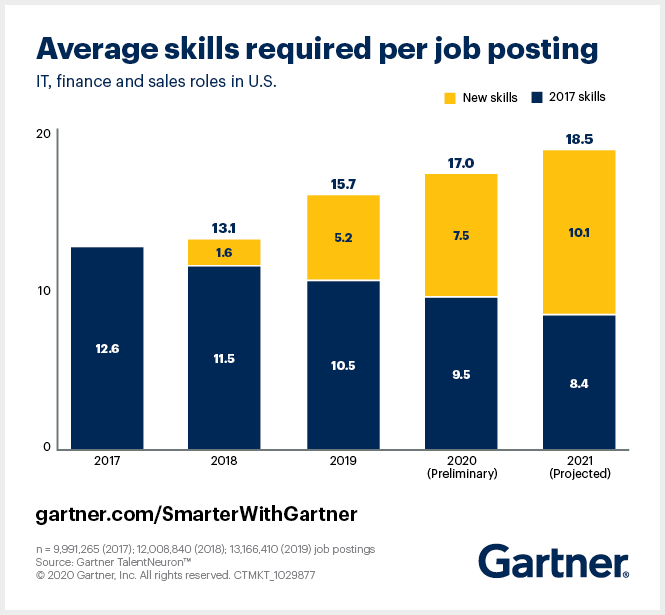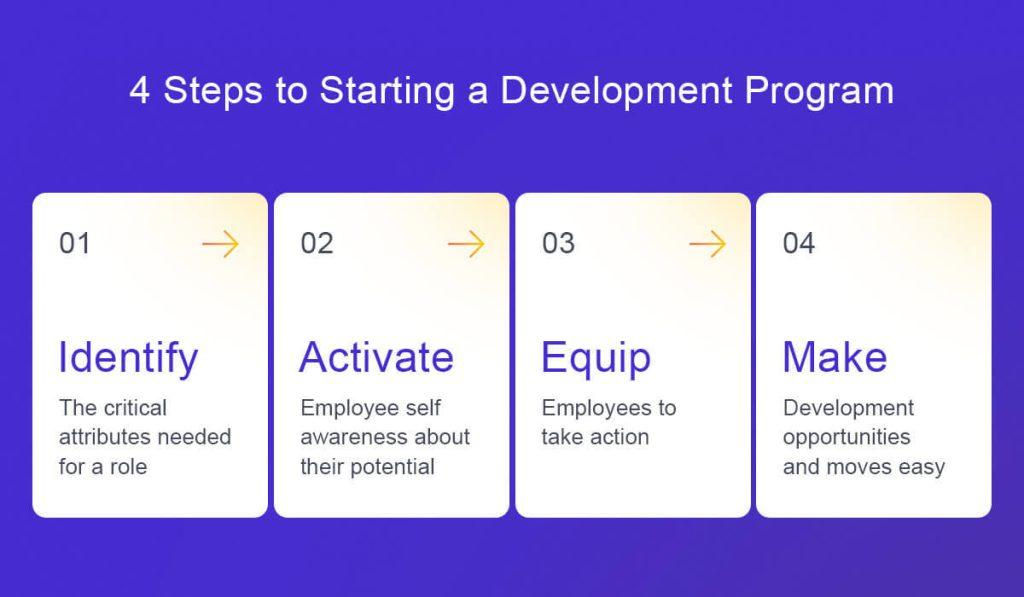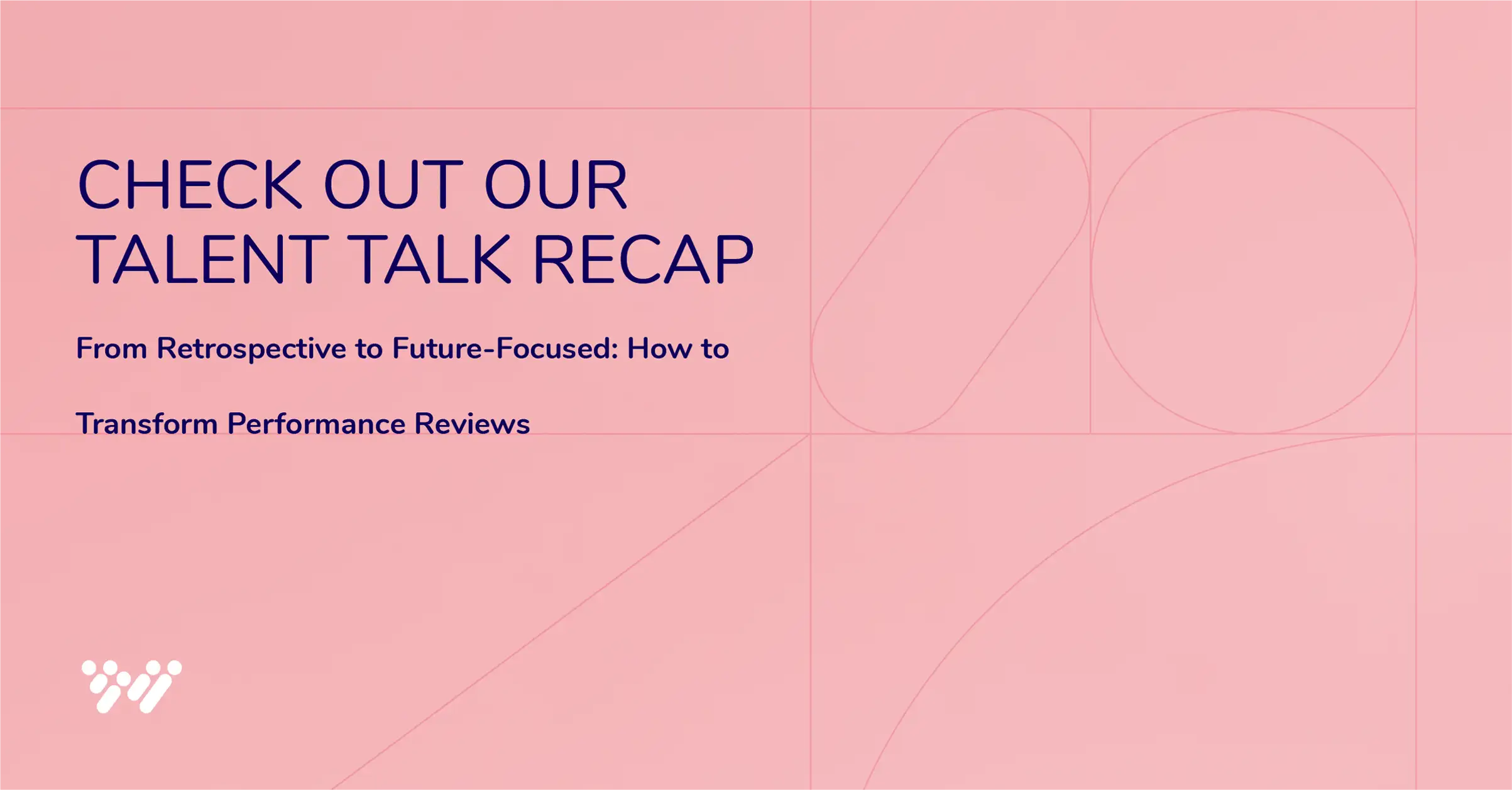HR leaders are not likely to see the tight talent market easing soon, according to the latest labor market data. That makes increasing retention and getting the most out of the people you have not just a priority — it’s a survival imperative. One of the most powerful strategies in the HR playbook for doing that is employee performance development.
For many, performance development is an under-emphasized component of the performance management program. That’s understandable given the challenges businesses face doing just the basics of performance management well. Yet performance management, as it’s typically done, overemphasizes activities that look back at what an employee did in the recent past. That information is necessary but insufficient for looking forward and adapting for the future. For that, organizations need performance development.
Performance development, as we recommend you do it, complements what you already do. It amplifies your performance management activities without requiring a heavy lift from your managers or your HR team. Below, we make the case for performance development and explain how you can get started with relatively low effort and investment.
What is performance development and why do you need it?
Performance development is a collaborative effort between an employee and their manager to identify opportunities for the employee to develop new role-specific capabilities aligned with their career goals and with the needs of the organization. By making overt investments in the employee’s future—and with the employee’s explicit buy-in—performance development cultivates a more engaged and higher-performing workforce.
Let’s unpack some of the key foundations of employee performance development starting with the employee’s career goals and associated strengths.
How development is good for employee retention and performance
The desire for development has long been a documented driver of employee engagement. Similarly, employees are more likely to stay with an organization if they can see future career potential for themselves. Match that desire to learn with the desire to know where that learning points them, and it’s clear why development is good for employees.
How development is good for the organization
The foundations of nearly every job are changing, fast. TalentNeuron has quantified an increase of 10% in the number of skills needed to perform the average job as well as increased skills obsolescence. Specifically, 33% of the skills needed to perform sales, finance, and tech jobs in 2017 were obsolete by 2021. Given this reality, organizations must adopt a continuous process of development and upskilling to ensure consistent performance. Having talent participate in that process is key. Organizations need people with the ability and motivation to learn and adapt as their role changes.

How small and mid-sized organizations benefit from developing their talent
For small and mid-sized companies, the challenge to develop the workforce is more urgent. According to research from the Brookings Institution, HR teams in mid-market companies tend to be lean and more operational in focus. That leads them to invest less in future-oriented initiatives like development—to their detriment. When markets change or new initiatives require talent they lack, they’re unprepared to recruit employees or develop existing team members. The flip side, however, is that when mid-market companies invest in employee performance development, people have more opportunities to apply what they learn. This results in significant organizational benefit.
Simply put, employees want to learn and organizations need to adapt their workforce for the future. Performance development benefits both sides—and organizations need it. By itself, the backward focus of performance management isn’t enough to prepare employees and the organization for what’s next.
Four steps to starting a performance development program
How can HR leaders who embrace performance development as part of their talent retention and performance strategy get started? Consider these four steps:
Step 1: Identify the critical attributes needed for a role
It’s one thing for employees to want to learn and develop in their careers. Knowing where to start is another issue entirely, however. Most employees don’t know what they should work on first. Their managers often don’t know either. And even when they do, they tend to fumble the difficult conversation about role-specific gaps, keeping the employee from absorbing the message. The consequence is that employees, for example new leaders, don’t get the guidance they need to improve.
A science-based development assessment like Wonderlic Develop removes the blind spots employees and managers have about the attributes employees need to perform well. Centering the conversation around the role provides a focal point that is less personal.
Step 2: Activate employee self awareness about their potential
Leveraging the assessment findings helps an employee develop self-awareness about where they are today and their potential for tomorrow. Wonderlic Develop does that by delivering insights about an employee’s existing role-specific strengths and blind spots. These equip employees to see themselves from multiple angles, helping them identify and adopt behaviors that will improve performance. With this content and context, people can build self-awareness and apply it immediately to their work.
A critical benefit of assessment data at this step is its objectivity compared to the personal views of the manager (who is vulnerable to bias even when they try not to be). That objectivity gives employees more confidence in the results. Wonderlic Develop is also simple and affordable. HR leaders can quickly stand up an employee performance development assessment capability at a low cost-per-seat, and scale impact easily across the organization.
Step 3: Equip employees to take action
Knowing what you’re good at and what needs work is essential. The next step is to take action—which can be hard without guidance. The Wonderlic Develop assessment provides that in the form of recommendations about job-specific behaviors an employee can focus on developing.
Wonderlic Develop puts development insights into the hands of the person with the greatest incentive to make improvement happen—the employee. Organizations tend to make employee performance development a management responsibility, but managers often lack the bandwidth and the coaching skills to take on development tasks. Equipping employees with those insights empowers them to identify what they want to work on and align with their manager. This improves employee motivation and buy-in.
Step 4: Make development opportunities and moves easy
Empowering people to develop themselves is key. Equally important is to remove barriers that prevent them from putting new capabilities to use inside your organization.
Cultivating a culture that embraces and supports development will require buy-in from managers. Though they benefit the most short-term from seeing team members grow, they also feel the most pain when a growing performer moves on to their next opportunity. Managers can encourage employee performance development by providing opportunities within the team as well as special assignments on cross-functional projects.

Having holistic assessment data available can help HR ensure that the employee performance development program is equally equipped to bring new talent into the roles vacated by employees that develop sideways or up.
A call for development
HR leaders trying to deliver on the promises of performance management may be skeptical that they have the bandwidth to add employee performance development to their list of priorities.
But starting with performance development is easier than you think. Easier, in fact, than more traditional elements of performance management such as annual reviews. Managers struggle with the burden of documenting proof of performance and many are uncomfortable providing face-to-face feedback. Employees, for their part, don’t want to hear what they fear will be criticism. This is especially true if the employee doesn’t believe their employer cares about their best interests (only one in four employees do).
In contrast, both sides have an incentive to invest in employee performance development for reasons already discussed. Most employees want to learn and feel like they are developing in their job. Most employers want to see increased retention, performance, and adaptability from their talent pool.
An effective performance development program supported by role-specific assessment insights gives organizations the tools to deliver more of what both sides want (e.g., clarity about a development path) and less of what they don’t (e.g., work and complexity). It doesn’t negate the look back value of performance management. It complements and enhances it for broader organizational benefit.
Click here to learn more about Wonderlic Develop, an essential resource for your employee performance development program.






